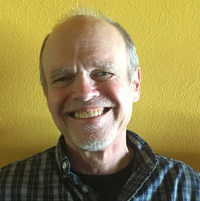Speech in the Communication Channel: The Long Journey of One Short Word
Blog #3 in the Phonology Means Nothing and Other Astounding and Very Practical Facts about Speech Sound Disorders Blog Series
For more information about this series, see the Phonology Means Nothing Series welcome page.

People often think of articulation and hearing as being mostly about the mouth and ear. This may be because those are visible structures—the former a hole occupying the lower part of our face and the latter a hole stuck on the side of our head. Of course, mouths and ears are just the beginning and end of a much more complex unseen process. To make this process visible without using technical vocabulary, ask someone to imagine that for some reason, they decide to say one little word, green.
It Starts in the Brain
The journey of green begins when you decide to say green. At this point, green is not a series of sounds, but electricity and brain chemicals. The brain electricity is the same as the electricity that moves through wires in the walls of your home. The brain chemicals are like the light switches on your wall that control the flow of electricity.
At this point, green exists only in pieces in various parts of your brain—color in one location and the pronunciation of the word in another. Still other parts of the brain may contain associations with the word, including perhaps that green sometimes means environmentally friendly and other times means a person beginning a new endeavor.
Next, the various parts of green assemble in the front part of your brain in preparation for pronunciation. Once assembled, the electrical current that is green travels from the front of your brain in several bundles of energy, the biological equivalent of electrical wires. One bundle travels directly to your muscles, and the other circles through the brain to check and correct possible speech errors before they happen. Both bundles meet at your muscles.
Muscle Power
Muscles are cells specialized to contract. The electrical current of green causes muscle cell contractions across half your body, from your stomach to your nose. Your diaphragm pushes your lungs, your lungs contract, and your articulators assume shapes for speech.
Air Travel
The muscle contractions push and shape air. Green now is air movement flowing from your lungs toward your throat. But the air moves too slowly, so the tube of your throat narrows midway, at your voice box, causing the air to energize—much like how the water in a broad river energizes when the river bed narrows, becoming rapids. The energized air travels through your mouth and nose, where muscle contractions have moved your articulators, so that, like pebbles and boulders in a stream, they shape and configure the energized air.
Green now is a wave of air emitted from your mouth. The air ripples like a stone dropped in a lake causes water to ripple. The rippling air moves away from your mouth and soon encounters a rather strange cauliflower-shaped thing on the side of your head. The cauliflower is the outer part of your ear. It exists there to capture rippling air—not unlike cupping your hand to your ear to create an extra ear when you have difficulty hearing something.
An Earful
The rippling air of green pushes on the membranes, ligaments, and muscles of your ear. Green is now vibrating flesh. Vibrations rattle your eardrum, travel through the smallest bones of your body, and push against a membrane, which in turn pushes on the water in the inner most part of your ear. Green is now rippling, salty chemical-laden water.
Green ripples along as water, and the water in turn presses down on a membrane lining the inner most part of your ear. Under the membrane are thousands of hair cells. The membrane pushes on the hair cells. Green now is a pattern of pressure on thousands upon thousands of hair cells. Attached to the hair cells are nerves of the brain specialized to carry electricity.
Electricity and Chemicals Again
The hair cells press on the nerve fibers and green is electricity again. The electricity moves in a bundle from your ear, up the brain, crossing over from one side of the brain to the other. It reaches the upper part of your brain, moves along through several places until it finally reaches a location where your brain reads the electrical current and translates it into a word: green. And so you articulate and perceive green, slightly less than one half second of speech.
Reference
Denes, P. B., & Pinson, N. (2015). The speech chain: The physics and biology of spoken language. New York, NY: Williams and Wilkins.
Acknowledgment
The Speech Chain is the book that first sparked my fascination with the topic that eventually resulted in The Long Journey of One Short Word (Denes & Pinson, 2015). I still have a dog-eared copy of The Speech Chain on my bookshelves—an early edition, quite old now, but still a fun, readable account of basic physics of speech.
